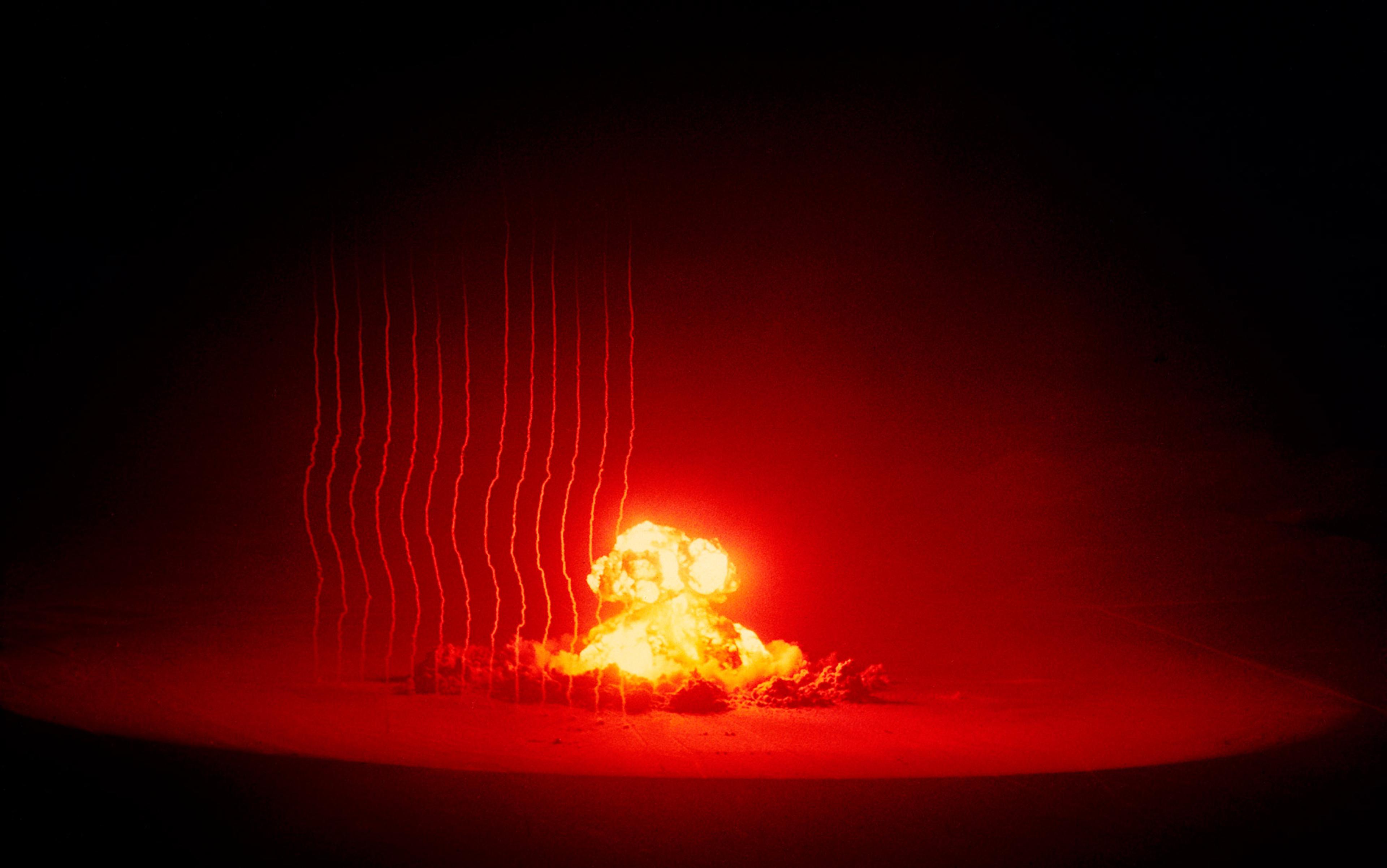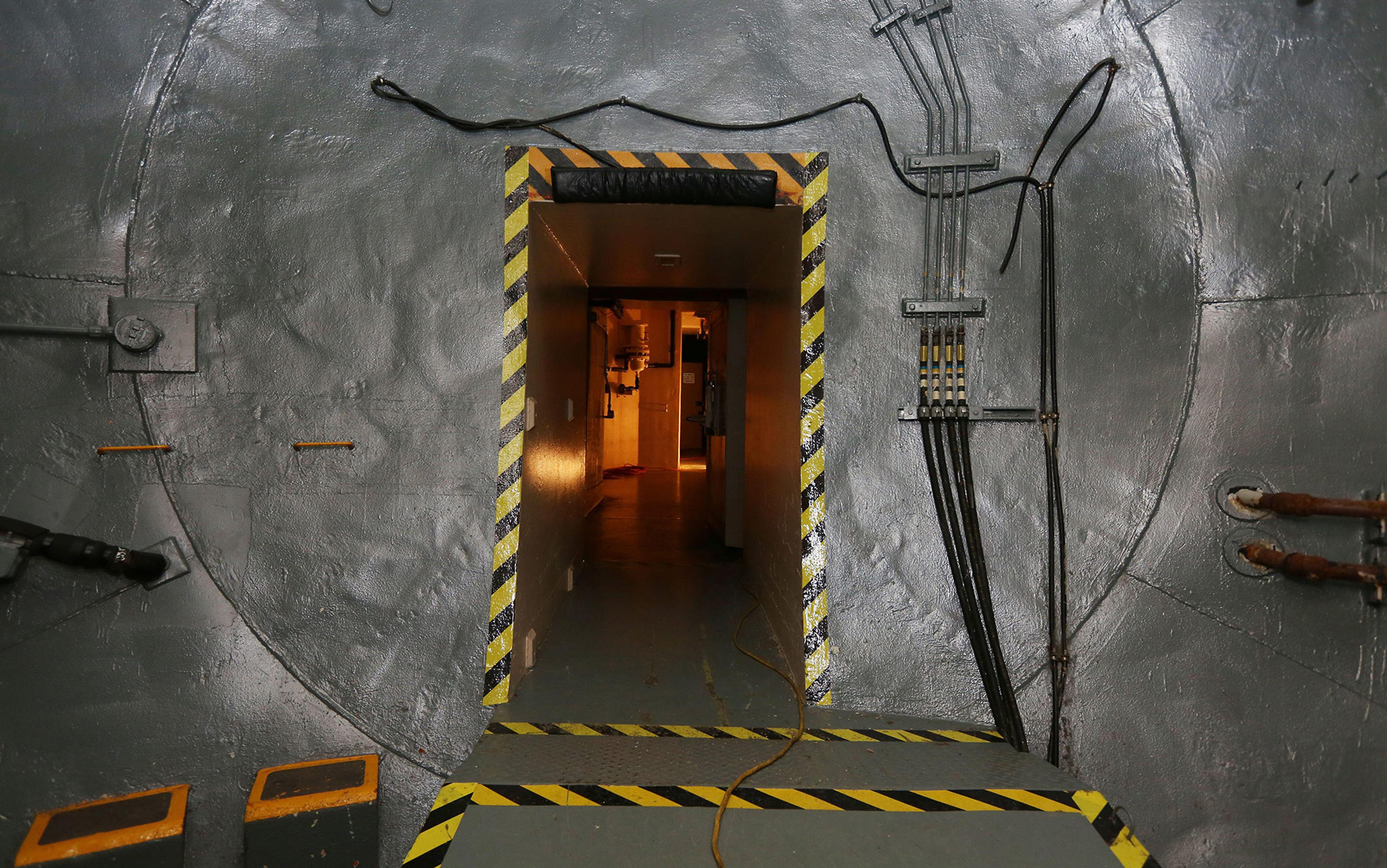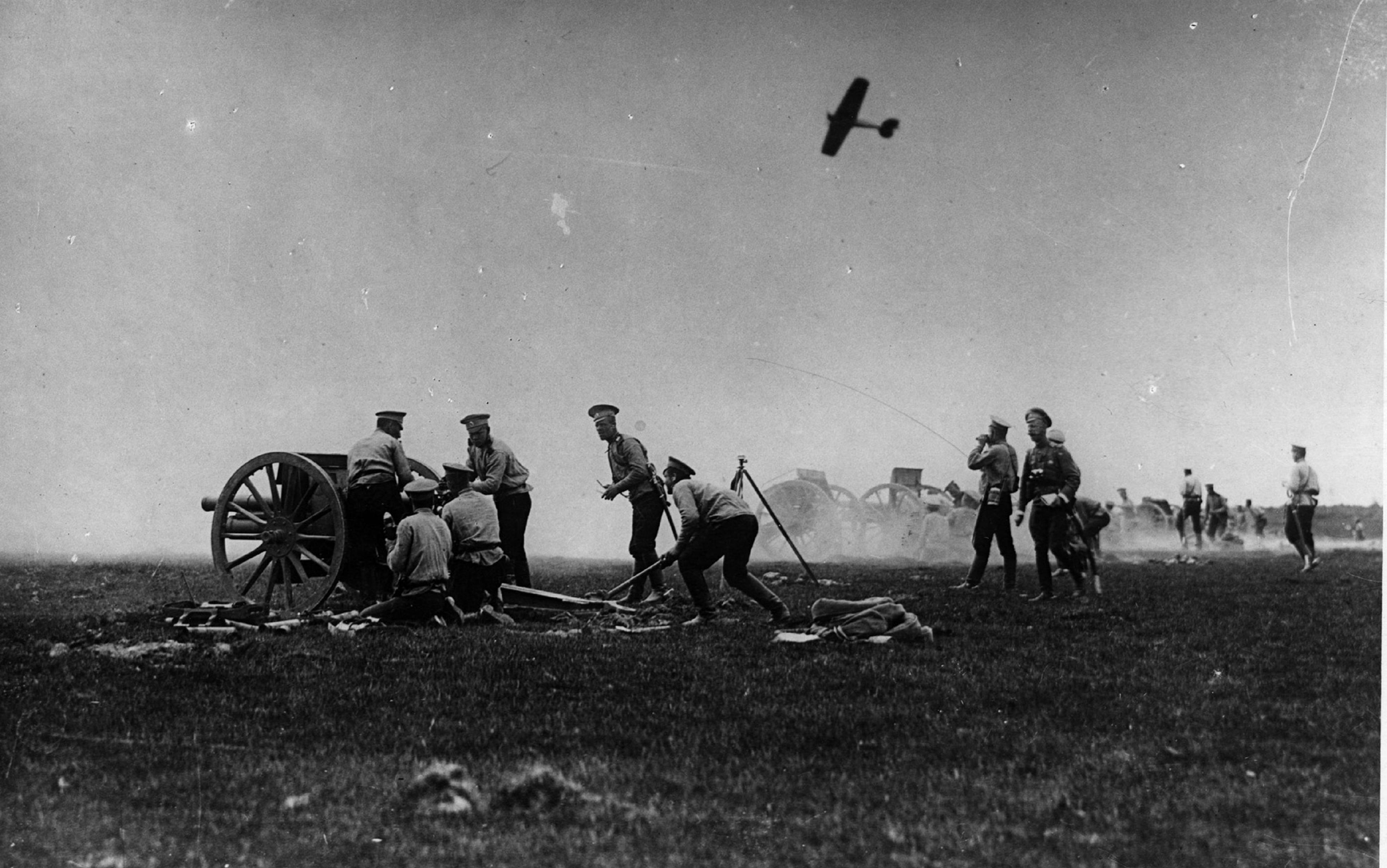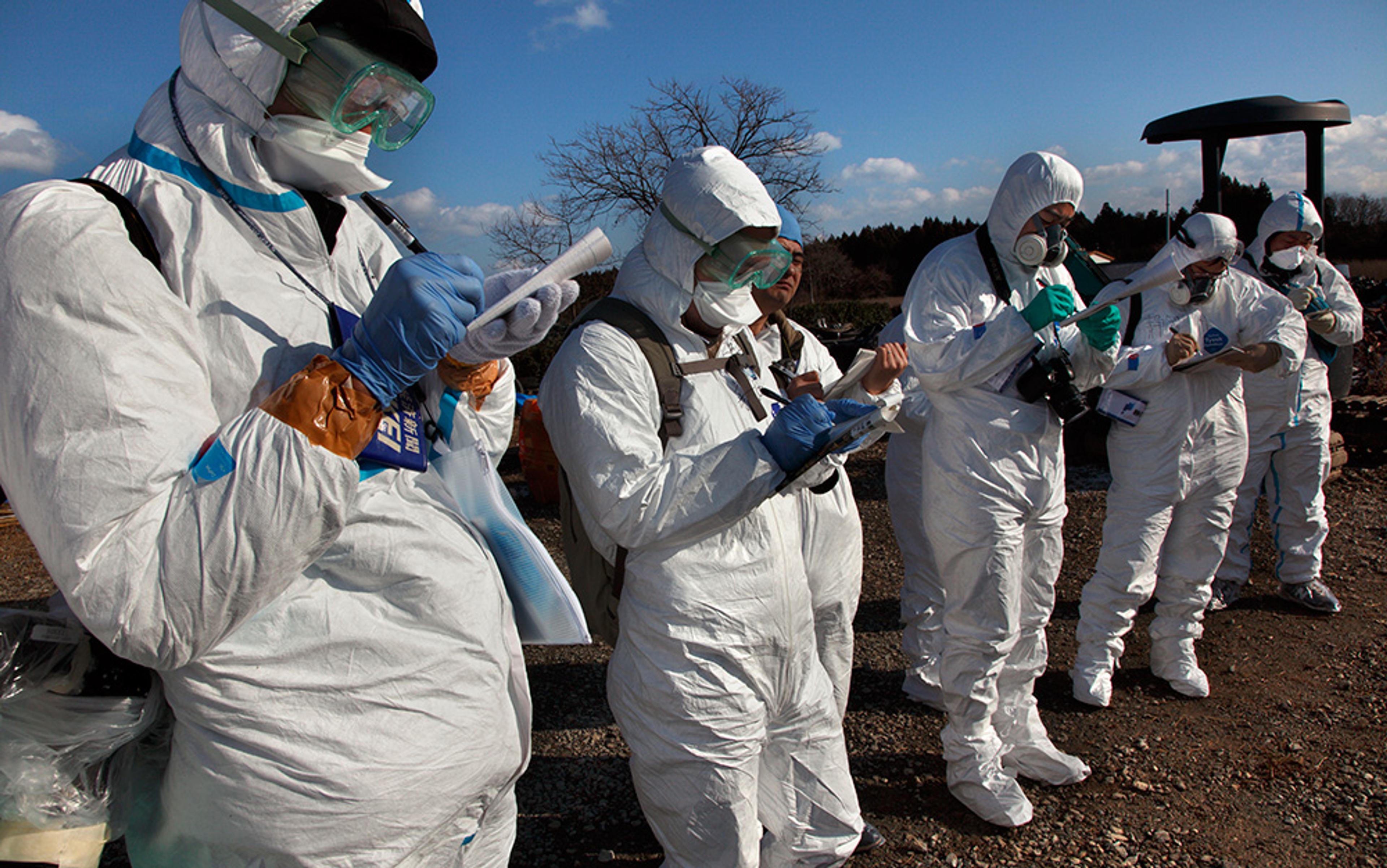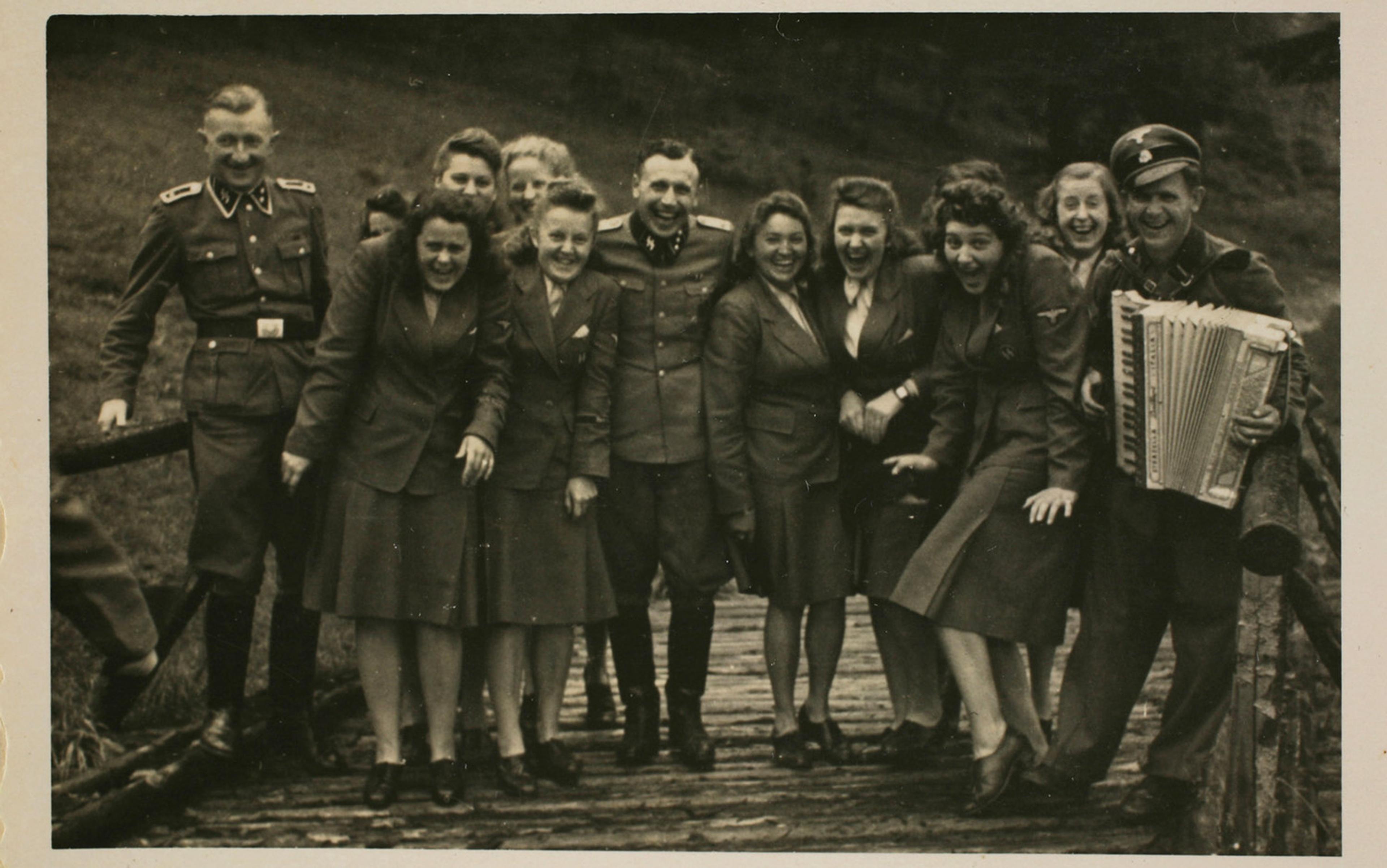In his classic The Evolution of Nuclear Strategy (1989), Lawrence Freedman, the dean of British military historians and strategists, concluded: ‘The Emperor Deterrence may have no clothes, but he is still Emperor.’ Despite his nakedness, this emperor continues to strut about, receiving deference he doesn’t deserve, while endangering the entire world. Nuclear deterrence is an idea that became a potentially lethal ideology, one that remains influential despite having been increasingly discredited.
After the United States’ nuclear bombings of Hiroshima and Nagasaki in 1945, war changed. Until then, the overriding purpose of military forces had ostensibly been to win wars. But according to the influential US strategist Bernard Brodie writing in 1978: ‘From now on its chief purpose must be to avert them. It can have almost no other useful purpose.’ Thus, nuclear deterrence was born, a seemingly rational arrangement by which peace and stability were to arise by the threat of mutually assured destruction (MAD, appropriately enough). Winston Churchill described it in 1955 with characteristic vigour: ‘Safety will be the sturdy child of terror, and survival the twin brother of annihilation.’ Importantly, deterrence became not only a purported strategy, but the very grounds on which governments justified nuclear weapons themselves. Every government that now possesses nuclear weapons claims that they deter attacks by their threat of catastrophic retaliation.
Even a brief examination, however, reveals that deterrence is not remotely as compelling a principle as its reputation suggests. In his novel The Ambassadors (1903), Henry James described a certain beauty as ‘a jewel brilliant and hard’, at once twinkling and trembling, adding that ‘what seemed all surface one moment seemed all depth the next’. The public has been bamboozled by the shiny surface appearance of deterrence, with its promise of strength, security and safety. But what has been touted as profound strategic depth crumbles with surprising ease when subjected to critical scrutiny.
Let’s start by considering the core of deterrence theory: that it has worked. Advocates of nuclear deterrence insist that we should thank it for the fact that a third world war has been avoided, even when tensions between the two superpowers – the US and the USSR – ran high. Some supporters even maintain that deterrence set the stage for the fall of the Soviet Union and the defeat of Communism. In this telling, the West’s nuclear deterrent prevented the USSR from invading western Europe, and delivered the world from the threat of Communist tyranny.
There are, however, compelling arguments suggesting that the US and the former Soviet Union avoided world war for several possible reasons, most notably because neither side wanted to go to war. Indeed, the US and Russia never fought a war prior to the nuclear age. Singling out nuclear weapons as the reason why the Cold War never became hot is somewhat like saying that a junkyard car, without an engine or wheels, never sped off the lot only because no one turned the key. Logically speaking, there is no way to demonstrate that nuclear weapons kept the peace during the Cold War, or that they do so now.
Perhaps peace prevailed between the two superpowers simply because they had no quarrel that justified fighting a terribly destructive war, even a conventional one. There is no evidence, for example, that the Soviet leadership ever contemplated trying to conquer western Europe, much less that it was restrained by the West’s nuclear arsenal. Post facto arguments – especially negative ones – might be the currency of pundits, but are impossible to prove, and offer no solid ground for evaluating a counterfactual claim, conjecturing why something has not happened. In colloquial terms, if a dog does not bark in the night, can we say with certainty that no one walked by the house? Deterrence enthusiasts are like the woman who sprayed perfume on her lawn every morning. When a perplexed neighbour asked about this strange behaviour, she replied: ‘I do it to keep the elephants away.’ The neighbour protested: ‘But there aren’t any elephants within 10,000 miles of here,’ whereupon the perfume-sprayer replied: ‘You see, it works!’ We should not congratulate our leaders, or deterrence theory, much less nuclear weapons, for keeping the peace.
The only way to make sure nuclear weapons are not used is to make sure there are no such weapons
What we can say is that, as of this morning, those with the power to exterminate life have not done so. But this is not altogether comforting, and history is no more reassuring. The duration of ‘nuclear peace’, from the Second World War to the end of the Cold War, lasted less than five decades. More than 20 years separated the First and Second World Wars; before that, there had been more than 40 years of relative peace between the end of the Franco-Prussian War (1871) and the First World War (1914), and 55 years between the Franco-Prussian War and Napoleon’s defeat at Waterloo (1815). Even in war-prone Europe, decades of peace have not been so rare. Each time, when peace ended and the next war began, the war involved weapons available at the time – which, for the next big one, would likely include nuclear weapons. The only way to make sure that nuclear weapons are not used is to make sure that there are no such weapons. There is certainly no reason to think that the presence of nuclear weapons will prevent their use. The first step to ensuring that humans do not unleash nuclear holocaust might be to show that the Emperor Deterrence has no clothes – which would then open the possibility of replacing the illusion with something more suitable.
It is possible that the post-1945 US-Soviet peace came ‘through strength’, but that need not imply nuclear deterrence. It is also undeniable that the presence of nuclear weapons on hair-trigger alert capable of reaching each other’s homeland in minutes has made both sides edgy. The Cuban Missile Crisis of 1962 – when, by all accounts, the world came closer to nuclear war than at any other time – is not testimony to the effectiveness of deterrence: the crisis occurred because of nuclear weapons. It is more likely that we have been spared nuclear war not because of deterrence but in spite of it.
Even when possessed by just one side, nuclear weapons have not deterred other forms of war. The Chinese, Cuban, Iranian and Nicaraguan revolutions all took place even though a nuclear-armed US backed the overthrown governments. Similarly, the US lost the Vietnam War, just as the Soviet Union lost in Afghanistan, despite both countries not only possessing nuclear weapons, but also more and better conventional arms than their adversaries. Nor did nuclear weapons aid Russia in its unsuccessful war against Chechen rebels in 1994-96, or in 1999-2000, when Russia’s conventional weapons devastated the suffering Chechen Republic. Nuclear weapons did not help the US achieve its goals in Iraq or Afghanistan, which have become expensive catastrophic failures for the country with the world’s most advanced nuclear weapons. Moreover, despite its nuclear arsenal, the US remains fearful of domestic terrorist attacks, which are more likely to be made with nuclear weapons than be deterred by them.
In short, it is not legitimate to argue that nuclear weapons have deterred any sort of war, or that they will do so in the future. During the Cold War, each side engaged in conventional warfare: the Soviets, for example, in Hungary (1956), Czechoslovakia (1968), and Afghanistan (1979-89); the Russians in Chechnya (1994-96; 1999-2009), Georgia (2008), Ukraine (2014-present), as well as Syria (2015-present); and the US in Korea (1950-53), Vietnam (1955-75), Lebanon (1982), Grenada (1983), Panama (1989-90), the Persian Gulf (1990-91), the former Yugoslavia (1991-99), Afghanistan (2001-present), and Iraq (2003-present), to mention just a few cases.
Nor have their weapons deterred attacks upon nuclear armed states by non-nuclear opponents. In 1950, China stood 14 years from developing and deploying its own nuclear weapons, whereas the US had a well-developed atomic arsenal. Nonetheless, as the Korean War’s tide was shifting dramatically against the North, that US nuclear arsenal did not inhibit China from sending more than 300,000 soldiers across the Yalu River, resulting in the stalemate on the Korean peninsula that divides it to this day, and has resulted in one of the world’s most dangerous unresolved stand-offs.
In 1956, the nuclear-armed United Kingdom warned non-nuclear Egypt to refrain from nationalising the Suez Canal. To no avail: the UK, France and Israel ended up invading Sinai with conventional forces. In 1982, Argentina attacked the British-held Falkland Islands, even though the UK had nuclear weapons and Argentina did not.
Following the US-led invasion in 1991, conventionally armed Iraq was not deterred from lobbing Scud missiles at nuclear-armed Israel, which did not retaliate, although it could have used its nuclear weapons to vaporise Baghdad. It is hard to imagine how doing so would have benefitted anyone. Obviously, US nuclear weapons did not deter the terrorist attacks on the US of 11 September 2001, just as the nuclear arsenals of the UK and France have not prevented repeated terrorist attacks on those countries.
Nuclear weapons didn’t escalate demands; if anything, such countries were less successful in getting their way
Deterrence, in short, does not deter. The pattern is deep and geographically widespread. Nuclear-armed France couldn’t prevail over the non-nuclear Algerian National Liberation Front. The US nuclear arsenal didn’t inhibit North Korea from seizing a US intelligence-gathering vessel, the USS Pueblo, in 1968. Even today, this boat remains in North Korean hands. US nukes didn’t enable China to get Vietnam to end its invasion of Cambodia in 1979. Nor did US nuclear weapons stop Iranian Revolutionary Guards from capturing US diplomats and holding them hostage (1979-81), just as fear of US nuclear weapons didn’t empower the US and its allies to force Iraq to retreat from Kuwait without a fight in 1990.
In Nuclear Weapons and Coercive Diplomacy (2017), the political scientists Todd Sechser and Matthew Fuhrmann examined 348 territorial disputes occurring between 1919 and 1995. They used statistical analysis to see whether nuclear-armed states were more successful than conventional countries in coercing their adversaries during territorial disputes. They weren’t. Not only that, but nuclear weapons didn’t embolden those who own them to escalate demands; if anything, such countries were somewhat less successful in getting their way. In some cases, the analysis is almost comical. Thus, among the very few cases in which threats from a nuclear-armed country were coded as having compelled an opponent was the US insistence, in 1961, that the Dominican Republic hold democratic elections following the assassination of the dictator Rafael Trujillo, as well as the US demand, in 1994, following a Haitian military coup, that the Haitian colonels restore Jean-Bertrand Aristide to power. In 1974-75, nuclear China forced non-nuclear Portugal to surrender its claim to Macau. These examples were included because the authors honestly sought to consider all cases in which a nuclear-armed country got its way vis-à-vis a non-nuclear one. But no serious observer would attribute the capitulation of Portugal or the Dominican Republic to the nuclear weapons of China or the US.
All of this also suggests that the acquisition of nuclear weapons by Iran or North Korea is unlikely to enable these countries to coerce others, whether their ‘targets’ are armed with nuclear or conventional weapons.
It is one thing to conclude that nuclear deterrence hasn’t necessarily deterred, and hasn’t provided coercive power – but its extraordinary risks are even more discrediting.
First, deterrence via nuclear weapons lacks credibility. A police officer armed with a backpack nuclear weapon would be unlikely to deter a robber: ‘Stop in the name of the law, or I’ll blow us all up!’ Similarly, during the Cold War, NATO generals lamented that towns in West Germany were less than two kilotons apart – which meant that defending Europe with nuclear weapons would destroy it, and so the claim that the Red Army would be deterred by nuclear means was literally incredible. The result was the elaboration of smaller, more accurate tactical weapons that would be more usable and, thus, whose employment in a crisis would be more credible. But deployed weapons that are more usable, and thus more credible as deterrents, are more liable to be used.
Second, deterrence requires that each side’s arsenal remains invulnerable to attack, or at least that such an attack would be prevented insofar as a potential victim retained a ‘second-strike’ retaliatory capability, sufficient to prevent such an attack in the first place. Over time, however, nuclear missiles have become increasingly accurate, raising concerns about the vulnerability of these weapons to a ‘counterforce’ strike. In brief, nuclear states are increasingly able to target their adversary’s nuclear weapons for destruction. In the perverse argot of deterrence theory, this is called counterforce vulnerability, with ‘vulnerability’ referring to the target’s nuclear weapons, not its population. The clearest outcome of increasingly accurate nuclear weapons and the ‘counterforce vulnerability’ component of deterrence theory is to increase the likelihood of a first strike, while also increasing the danger that a potential victim, fearing such an event, might be tempted to pre-empt with its own first strike. The resulting situation – in which each side perceives a possible advantage in striking first – is dangerously unstable.
Third, deterrence theory assumes optimal rationality on the part of decision-makers. It presumes that those with their fingers on the nuclear triggers are rational actors who will also remain calm and cognitively unimpaired under extremely stressful conditions. It also presumes that leaders will always retain control over their forces and that, moreover, they will always retain control over their emotions as well, making decisions based solely on a cool calculation of strategic costs and benefits. Deterrence theory maintains, in short, that each side will scare the pants off the other with the prospect of the most hideous, unimaginable consequences, and will then conduct itself with the utmost deliberate and precise rationality. Virtually everything known about human psychology suggests that this is absurd.
In Black Lamb and Grey Falcon: A Journey Through Yugoslavia (1941), Rebecca West noted that: ‘Only part of us is sane: only part of us loves pleasure and the longer day of happiness, wants to live to our 90s and die in peace …’ It requires no arcane wisdom to know that people often act out of misperceptions, anger, despair, insanity, stubbornness, revenge, pride and/or dogmatic conviction. Moreover, in certain situations – as when either side is convinced that war is inevitable, or when the pressures to avoid losing face are especially intense – an irrational act, including a lethal one, can appear appropriate, even unavoidable. When he ordered the attack on Pearl Harbor, the Japanese defence minister observed that: ‘Sometimes it is necessary to close one’s eyes and jump off the platform of the Kiyomizu Temple [a renowned suicide spot].’ During the First World War, Kaiser Wilhelm II of Germany wrote in the margin of a government document that: ‘Even if we are destroyed, England at least will lose India.’ While in his bunker, during the final days of the Second World War, Adolf Hitler ordered what he hoped would be the total destruction of Germany, because he felt that Germans had ‘failed’ him.
Consider, as well, a US president who shows signs of mental illness, and whose statements and tweets are frighteningly consistent with dementia or genuine psychosis. National leaders – nuclear-armed or not – aren’t immune to mental illness. Yet, deterrence theory presumes otherwise.
If something is immoral to do, then it is also immoral to threaten
Finally, there is just no way for civilian or military leaders to know when their country has accumulated enough nuclear firepower to satisfy the requirement of having an ‘effective deterrent’. For example, if one side is willing to be annihilated in a counterattack, it simply cannot be deterred, no matter the threatened retaliation. Alternatively, if one side is convinced of the other’s implacable hostility, or of its presumed indifference to loss of life, no amount of weaponry can suffice. Not only that, but so long as accumulating weapons makes money for defence contractors, and so long as designing, producing and deploying new ‘generations’ of nuclear stuff advances careers, the truth about deterrence theory will remain obscured. Even the sky is not the limit; militarists want to put weapons in outer space.
Insofar as nuclear weapons also serve symbolic, psychological needs, by demonstrating the technological accomplishments of a nation and thus conveying legitimacy to otherwise insecure leaders and countries, then, once again, there is no rational way to establish the minimum (or cap the maximum) size of one’s arsenal. At some point, additional detonations nonetheless come up against the law of diminishing returns, or as Winston Churchill pointed out, they simply ‘make the rubble bounce’.
In addition, ethical deterrence is an oxymoron. Theologians know that a nuclear war could never meet so-called ‘just war’ criteria. In 1966, the Second Vatican Council concluded: ‘Any act of war aimed indiscriminately at the destruction of entire cities or of extensive areas along with their populations is a crime against God and man itself. It merits unequivocal and unhesitating condemnation.’ And in a pastoral letter in 1983, the US Catholic bishops added: ‘This condemnation, in our judgment, applies even to the retaliatory use of weapons striking enemy cities after our own have already been struck.’ They continued that, if something is immoral to do, then it is also immoral to threaten. In a message to the 2014 Vienna Conference on the Humanitarian Impact of Nuclear Weapons, Pope Francis declared that: ‘Nuclear deterrence and the threat of mutually assured destruction cannot be the basis of an ethics of fraternity and peaceful coexistence among peoples and states.’
The United Methodist Council of Bishops go further than their Catholic counterparts, concluding in 1986 that: ‘Deterrence must no longer receive the churches’ blessing, even as a temporary warrant for the maintenance of nuclear weapons.’ In The Just War (1968), the Protestant ethicist Paul Ramsey asked his readers to imagine that traffic accidents in a particular city had suddenly been reduced to zero, after which it was found that everyone had been required to strap a newborn infant to the bumper of every car.
Perhaps the most frightening thing about nuclear deterrence is its many paths to failure. Contrary to what is widely assumed, the least likely is a ‘bolt out of the blue’ (BOOB) attack. Meanwhile, there are substantial risks associated with escalated conventional war, accidental or unauthorised use, irrational use (although it can be argued that any use of nuclear weapons would be irrational) or false alarms, which have happened with frightening regularity, and could lead to ‘retaliation’ against an attack that hadn’t happened. There have also been numerous ‘broken arrow’ accidents – accidental launching, firing, theft or loss of a nuclear weapon – as well as circumstances in which such events as a flock of geese, a ruptured gas pipeline or faulty computer codes have been interpreted as a hostile missile launch.
The above describes only some of the inadequacies and outright dangers posed by deterrence, the doctrinal fulcrum that manipulates nuclear hardware, software, deployments, accumulation and escalation. Undoing the ideology – verging on theology – of deterrence won’t be easy, but neither is living under the threat of worldwide annihilation. As the poet T S Eliot once wrote, unless you are in over your head, how do you know how tall you are? And when it comes to nuclear deterrence, we’re all in over our heads.
